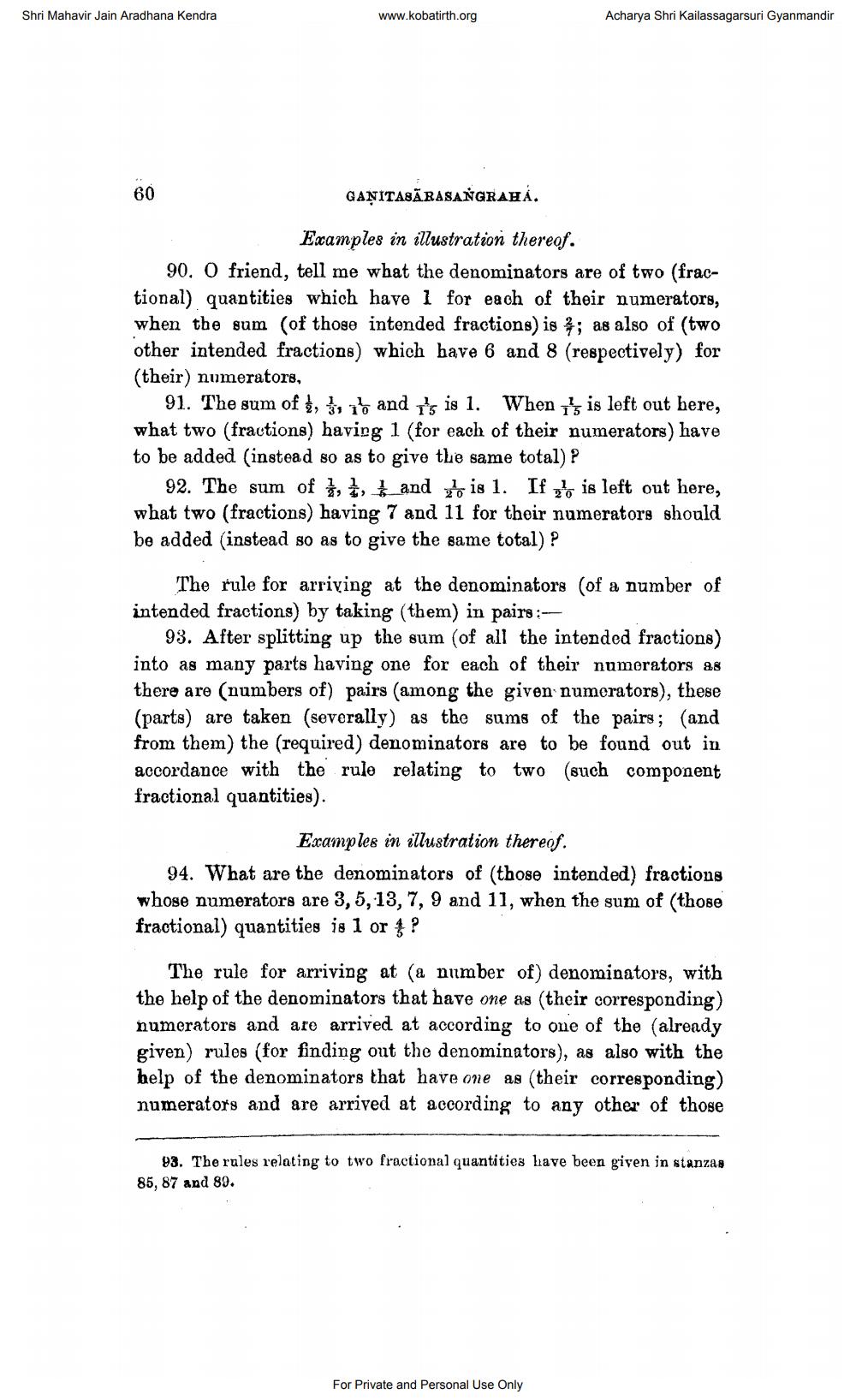________________
Shri Mahavir Jain Aradhana Kendra
www.kobatirth.org
Acharya Shri Kailassagarsuri Gyanmandir
GANITASÄRASANGRAHÁ.
Examples in illustration thereof. 90. O friend, tell me what the denominators are of two (fractional) quantities which have 1 for each of their numerators, when the sum of those intended fractions) is ; as also of two other intended fractions which have 6 and 8 (respectively) for (their) numerators,
91. The sum of , b and is 1. When is left out here, what two (fractions) having 1 (for each of their numerators) have to be added (instead so as to give the same total)?
92. The sum of 1, 1, and to is 1. If z% is left out here, what two (fractions) having 7 and 11 for their numerators should be added (instead so as to give the same total) ?
The rule for arriving at the denominators (of a number of intended fractions by taking (them) in pairs
93. After splitting up the sum (of all the intended fractions) into as many parts having one for each of their numerators as there are (numbers of) pairs (among the given numerators), these (parts) are taken (severally) as the sums of the pairs; (and from them) the (required) denominators are to be found out in accordance with the rule relating to two (such component fractional quantities).
Examples in illustration thereof. 94. What are the denominators of those intended) fractions whose numerators are 3, 5, 13, 7, 9 and 11, when the sum of (those fractional) quantities is 1 or ?
The rule for arriving at a number of) denominators, with the help of the denominators that have one as their corresponding) numerators and are arrived at according to one of the (already given) rules (for finding out the denominators), as also with the help of the denominators that have one as their corresponding) numerators and are arrived at according to any other of those
93. The rules relating to two fractional quantities have been given in stanzas 85, 87 and 89.
For Private and Personal Use Only




